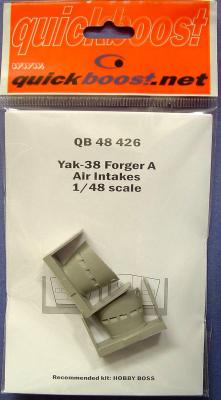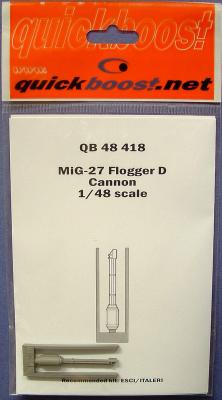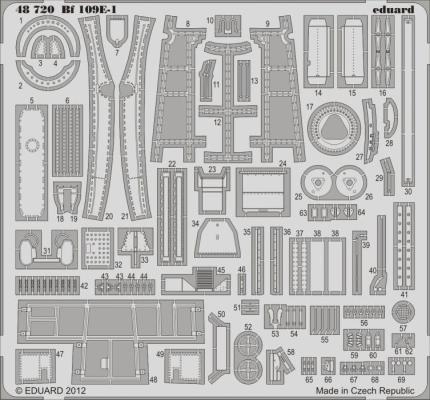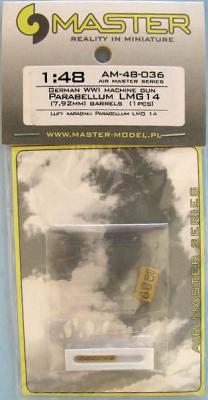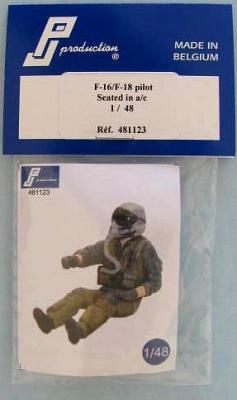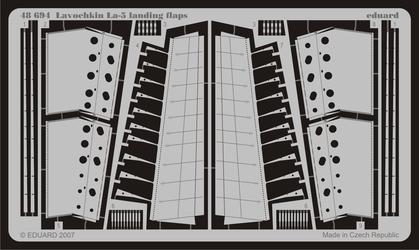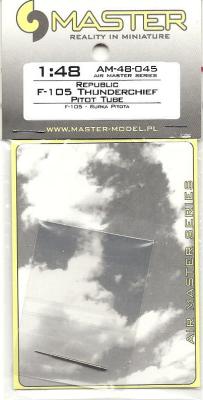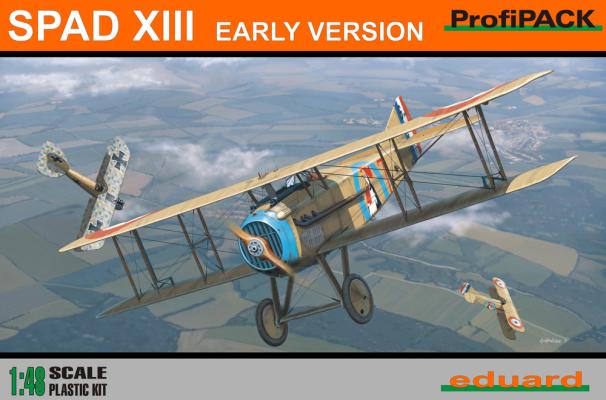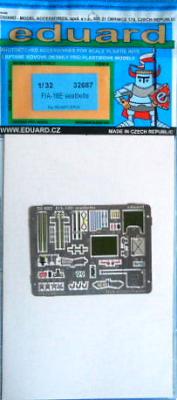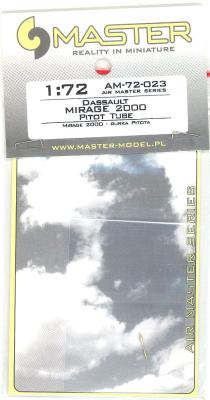The Yak-38 Forger was the Soviet Union’s equivalent to the Harrier. Built to operate from the KIEV Class Aircraft-Carrying Cruiser, the Forger provided limited air defense and anti-surface ship capability. The Forger relied on the main engine to provide the forward thrust and the lift capability for the rear fuselage. Unlike the Harrier, it had two dedicated lift engines behind the pilot to assist with VTOL. Like the Harrier, the Forger had spring-loaded blow-in doors in the intakes to provide more air during takeoff and landings. And, like the Harriers, when the Forger was shut down, these doors could often be found in the open position. I have provided an image from a Soviet State Publication on the Navy of the period that shows the open intakes to good effect. Unfortunately, the Hobby Boss kit provides intakes with the doors closed. You could open these doors and make replacements from styrene strip. Quickboost, however, has done this for you with this set.
The MiG-27 is a dedicated ground attack variant of the MiG-23 that was built for the Soviet Air Forces. Unlike the MiG-23BN ground attack variant, which still carries the GSh-23L two-barreled 23mm cannon, the MiG-27 instead is fitted with a six-barreled GSh-6-30 Gatling-type 30 millimeter cannon. Unlike the 23mm gun, the 30mm is not shrouded by a cover and so the barrels are fully exposed. The only 1/48 scale kit of this aircraft is the former ESCI kit now made by ITALERI and it does come with a 30mm Gatling gun. It is molded in two halves and the seams must be cleaned up. The detail is rather simplistic and the barrels a little large. Given its visible position, it really needs greater detail.
The Product
Arriving on the heels of their all-new Bf-109E in 1/48 scale, the boys at Eduard have already produced an excellent and comprehensive photo etch upgrade set. Considering the beautiful, highly detailed, all-new tooling Eduard kit, I wondered what else they could add to this superb kit. The answer is easy. Starting in the cockpit, we get a new document box, rudder petals, trim wheels, plus all the extra small items that add the finishing touches where needed. The gun bay and engine also benefit by adding ammo box grab handles. The DB 601 benefits from adding lifting-jack points, intake screen, and a top case plate. New cowling formers for the engine bearers and a cap for the header tank are also included. The radiators also get the treatment with new exit doors that include the proper linkages. We also have new interiors for the main landing gear wells, as well as gear-leg parts that include drag links, brake-plates, and brake-lines.
The Parabellum LMG 14 was introduced in 1914 by the German company Deutche Waffen und Munitionsfabriken, and was based on their MG 08 gun. Rather than using a belt feed system, the LMG 14 utilized an enclosed drum magazine to hold the same 7.92 mm ammunition as its predecessor. Other modifications for the LMG 14 included a lighter casing and the use of air instead of water for cooling the barrel. The gun had a rate of fire of 700 rounds per minute, and was used mostly on bombers, scout planes, and zeppelins. There were attempts to synchronize this particular gun with the propeller on initial Fokker E.1 planes, but this was later abandoned due to issues with the reliability of the LMG 14.
I typically start my reviews with a brief history of the item that I am reviewing, but in this instance, the item represented is a pilot for either an F-16 or an F/A-18. What I will tell you is that the latest 1/48 scale figure offering by PJ Production from Belgium is a nicely designed figure wearing an HGU-55 helmet along with a standard flight suit, G-suit, and Nomex gloves. The figure comes with a single left arm and two different right arms, as the controls are different for the Falcon and Hornet (the Falcon has its control stick located on the right console where the Hornet is centered in front of the pilot).
Introduction
While it’s primarily remembered for the massive clash of armor on the ground, the battle of Kursk was also the debut a new Soviet fighter that would eventually help wrest control of the sky from the Luftwaffe’s Fw190 and Me109. That was the Lavochkin La-5/7 series of fighters. An offspring of the earlier LaGG-3 fighter, the La-5 was born when the inline engine of its protégée was replaced by a 14-cylinder M-82 radial engine. In spite of early teething problems that resulted in a redesigned cowling and the reduction of armament to 2 x 20 mm ShVAK cannons, the La-5 proved more than a match for the heavier Fw190A-4/5 series. The La-5FN was equipped with a fuel injected M-82FN radial, further improving its performance. Many Soviet aces, including Ivan Kozhedub (62 kills) and the subject of this built, Capt Pyotr Likholetov (30 kills), added to their scores flying the LA-5/7 series fighters.
One of the last things I add to an aircraft model before calling it complete is the pitot tube. It's too easy to break off otherwise. If it didn't have such an important function and was not so noticeable on the aircraft, I think I'd leave it off.
A French engineer named Henri Pitot invented the pitot tube in the 18th century. It was a device to measure pressure and determine the velocity of a fluid flowing past it. It has since been modified and significantly improved to determine the airspeed of an aircraft. Today's sophisticated pitot tube measures the air pressure as the aircraft "flows" through the air.
First delivered to combat units in the fall of 1917, the Spad XIII was a refinement of the successful Spad VII design, featuring increased power and armament. Within months of initial delivery, 15 of 16 operational American pursuit squadrons had transitioned to the legendary French-built fighter. One of those squadrons was the 94th Pursuit Squadron, to which America’s leading ace of The Great War, Captain Eddie Rickenbacker, was assigned.
Eduard’s most recent release of the Spad XIII depicts an early production configuration. The kit includes color instructions and marking guide, markings for 5 aircraft (3 French, 1 British, and 1 Italian), a fret of photo-etched details, a set of masks, 3 sprues of the customary beige injection molded parts, and a single small clear sprue with 3 windscreen options.
Eduard has fired up another set of seatbelts to fit in with their PE Interior set for the 1/32 F/A-18E. Aside from their beautiful and accurate seatbelts, Eduard has also included lots of stuff for the enhancement of the seat for this kit. It has colored “padding” which fits to the seat bottom and back. There are also other small items that can be added to the seat for detail that will make this seat really something to look at. The belts and all the other items are painted beautifully with details that can’t otherwise be matched by dry brushing. The instructions are clear and concise and, importantly, not intimidating. Of course, the use of CA glue will be necessary, but using it sparingly and carefully along with a little weathering or a wash should produce great looking results. I definitely recommend this package for this kit, which plainly shows that a little can go a long way. Also, the price is right, which makes it a complete value.
This is the second time that I’ve used one of the turned brass aftermarket pieces from Master Models Poland. The piece that I’m reviewing is the pitot tube for the Dassault Mirage 2000. As luck would have it, I’ve been working on a Heller Mirage 2000 and was really happy to receive this part.
The first thing I would like to point out is how good the packaging and instruction sheet is. The packaging consists of a zip-lock type bag while the part is in a smaller bag, keeping it from moving all over. The instruction sheet is very clear and easy to understand, only needing 3 steps. Cut off original part. Drill a hole (0.8 mm). Glue in the new metal part. Just be careful drilling the hole, especially in 1/72.

